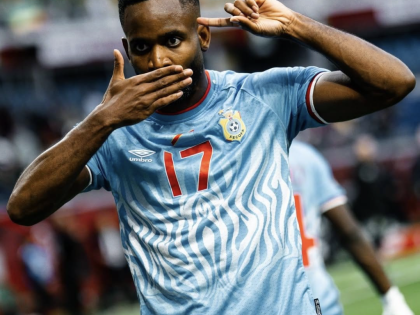Weekend Special, No 1002

A bunch of us went to the African Studies Association’s annual meeting in Indianapolis, Indiana. This is the world’s largest gathering of Africanists. Much transpired. The problems with conferences this large is you can’t cover everything. We made notes and hopefully we’ve found new contributors. For a general sense of what transpired, the tweets of AIAC’s Oumar Ba (graduate student at University of Florida) is a good barometer for the mood of the conference. (See also the hashtag #ASA2014). Ba, though, missed Canadian historian Martin Klein’s bizarre claim as he was introducing veteran Senegalese Boubacar Barry for the association’s “Distinguished Africanist Award” that “… when I went to Senegal When I first visited Senegal in 1963 there were no historians of Senegal.” Some people moved in their seats. Sitting next to me, an African scholar shouted back: “… in America.” Barry acted like he didn’t hear it and emphasized that he spent much of his career at the Cheikh Anta Diop University in Dakar. You know who that university is named for, right?
* AIAC also held its first “conference party.” About twenty people turned up at a bar in downtown Indianapolis, including a whole bunch of AIAC writers and/or editors–Jill Kelley, Liz Timbs, Yael Even Or, Daniel Magaziner, Oumar Ba, Neelika Jayawardane, Marissa Moorman–and a whole bunch of supporters and friends. Next year, San Diego.
* Enough academia. The big news is that we published our first ebook, “Apartheid Israel: The Politics of an Analogy.” It was edited by historian Jon Soske and AIAC Life President Sean Jacobs. The ebook has a stellar cast of contributors–mostly academics (them again) and researchers working on and from South Africa–that include Achille Mbembe, Robin DG Kelley, Marissa Moorman, Bill Freund and Andy Clarno, among others, asking whether the analogy is helpful. Go on, read it.
* #BandAid30 rolled on with Bob Geldof now having the number one tune on a number of platforms. It is still unclear whether Africans asked him to do this (some African musicans, stars like Salif Keita and Amadou and Mariam among them, made a song already) or where all this money is going. We leave you with this #BandAid30 simulacrum (HT Angela Subulwa, University of Wisconsin Oshkosh):
And, here’s a video of the artist intellectual Cameroonian Goddy Leye (1965-2011), lying in a bed of bananas and watermelons, singing “We are the World”:
https://www.youtube.com/watch?v=BcP7PVlxIu4
* The white South African artist behind the Mandela Ray Ban sculpture (now remixed by Tokoloshe Stencils) compared the negative reaction to his bollocks to the “mob hysteria,” “lynch mobs with burning crosses” (the Klan?) and the Rwandan Genocide. Yes, he did. Cape Talk, the radio station where he made these claims is a subject for another day.
* Chimamanda Ngozi Adichie gave a Dutch filmmaker, who made a film about blackface, the side-eye.
We’re not sure who gets the Stuff White People Do Award for last week. The Ray Ban Mandela artist? Zwarte Piet’s defenders? Bob Geldof? You decide.
* Part of our Football is a Country offshoot, Sean Jacobs and Pablo Medina Uribe, work and study respectively, at The New School. That’s where they hosted the writer and broadcaster David Goldblatt last Wednesday. David has been described as the best football historian of our time, so this was a treat. Once The New School posts the video, we’ll put it up here.
* Finally, there’s this:
(function(d, s, id) { var js, fjs = d.getElementsByTagName(s)[0]; if (d.getElementById(id)) return; js = d.createElement(s); js.id = id; js.src = “//connect.facebook.net/en_US/all.js#xfbml=1”; fjs.parentNode.insertBefore(js, fjs); }(document, ‘script’, ‘facebook-jssdk’));



















